
Word document containing full sample item set
- Subject:
- Agriculture
- Ecology
- Environmental Science
- Forestry and Agriculture
- Material Type:
- Lesson Plan
- Author:
- Donna Balado
- Jeremy Haack
- Date Added:
- 07/04/2018

Word document containing full sample item set
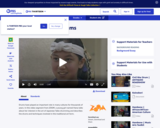
In this ZOOM video segment, join Hana as she learns traditional Japanese drumming with her Taiko group.

This activity teaches students how energy is obtained from nuclear fission and how it is used to produce electricity in a nuclear power plant. It also teaches students how some of the electricity they use is produced.
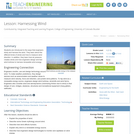
This lesson introduces the ways that engineers study and harness the wind. Students will learn about the different kinds of winds and how to measure wind direction. In addition, students will learn how air pressure creates winds and how engineers build and test wind turbines to harness energy from wind.
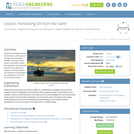
In this lesson, students investigate sources of fossil fuels, particularly oil. Students will learn how engineers and scientists look for oil by taking core samples from a model of the Earth. Also, students will explore and analyze oil consumption and production in the United States and around the world.

Students explore heat transfer and energy efficiency using the context of energy efficient houses. They gain a solid understanding of the three types of heat transfer: radiation, convection and conduction, which are explained in detail and related to the real world. They learn about the many ways solar energy is used as a renewable energy source to reduce the emission of greenhouse gasses and operating costs. Students also explore ways in which a device can capitalize on the methods of heat transfer to produce a beneficial result. They are given the tools to calculate the heat transferred between a system and its surroundings.
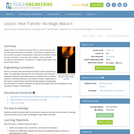
Heat transfer is an important concept that is a part of everyday life yet often misunderstood by students. In this lesson, students learn the scientific concepts of temperature, heat and the transfer of heat through conduction, convection and radiation. These scientific concepts are illustrated by comparison to magical spells used in the Harry Potter stories.
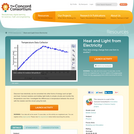
Discover how electricity can be converted into other forms of energy such as light and heat. Connect resistors and holiday light bulbs to simple circuits and monitor the temperature over time. Investigate the differences in temperature between the circuit with the resistor and the circuit using the bulb.
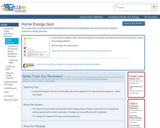
In this activity, students take a Home Energy Quiz to identify improvements that could make their homes more energy-efficient.
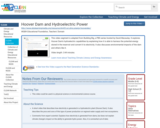
This video segment is adapted from Building Big, a PBS series hosted by David Macaulay. It explores Hoover Dam's hydroelectric capabilities by explaining how it is able to harness the potential energy stored in the reservoir and convert it to electricity. It also discusses environmental impacts of the dam and others like it.
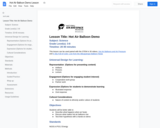
Students will be better able to discuss and describe what happens when air heats, and test their hypothesis with a hands-on demo
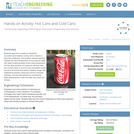
Students apply the concepts of conduction, convection and radiation as they work in teams to solve two challenges. One problem requires that they maintain the warm temperature of one soda can filled with water at approximately human body temperature, and the other problem is to cause an identical soda can of warm water to cool as much as possible during the same 30-minute time period. Students design their engineering solutions using only common everyday materials, and test their devices by recording the water temperatures in their two soda cans every five minutes.
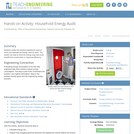
Students review the electrical appliances used at home and estimate the energy used for each. The results can help to show the energy hogs that could benefit from conservation or improved efficiency.
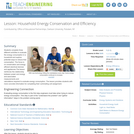
Students complete three different activities to evaluate the energy consumption in a household and explore potential ways to reduce that consumption. The focus is on conservation and energy efficient electrical devices and appliances. The lesson reinforces the relationship between power and energy and associated measurements and calculations required to evaluate energy consumption. The lesson provides the students with more concrete information for completing their culminating unit assignment.
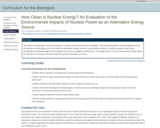
This writing assignment is in lieu of a laboratory activity during the discussion of nuclear chemistry within the general chemistry curriculum.
(Note: this resource was added to OER Commons as part of a batch upload of over 2,200 records. If you notice an issue with the quality of the metadata, please let us know by using the 'report' button and we will flag it for consideration.)
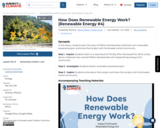
SYNOPSIS: In this lesson, students learn the story of William Kamkwamba, build their own renewable-powered project, and share their project with the broader school community.
SCIENTIST NOTES: This lesson engages students to build a renewable energy product. It contains clear illustrations on how to create a product, test it out, and share the innovation with an audience. There are no misconceptions in this lesson. It is advised that this lesson be used in the classroom.
POSITIVES:
-Students learn the inspiring story of William Kamkwamba and how he brought power to his community.
-Students get to engineer with their hands!
ADDITIONAL PREREQUISITES:
-This is lesson 4 of 6 in our 3rd-5th grade Renewable Energy unit.
-You will need to procure a copy of The Boy Who Harnessed the Wind for this lesson.
-The Investigate section of this lesson plan is listed as 40 minutes long. However, some students may need more time to finish their projects. Perhaps they could keep building their projects before school, at recess, after school, or at home.
-It may be best to check with your administration or team teachers to see if your students can display their projects in a common area. Also, a "please do not touch" sign may be necessary for the display so your students' creations do not get broken.
-This lesson may need to be postponed if it is not sunny or windy enough on that day.
DIFFERENTIATION:
-You may not have enough specialized materials (small solar panel, hobby motor, etc.) for all students. Students can work in groups to share these limited materials.
-If you decide to have your students present to another class, encourage every student to have a speaking part.
-Perhaps you can allow students to bring in materials from home. Be mindful of students who have nicer materials and how other students feel if they are using school materials only.
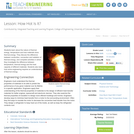
Students learn about the nature of thermal energy, temperature and how materials store thermal energy. They discuss the difference between conduction, convection and radiation of thermal energy, and complete activities in which they investigate the difference between temperature, thermal energy and the heat capacity of different materials. Students also learn how some engineering requires an understanding of thermal energy.
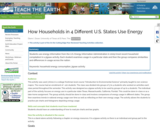
Students use energy information from the U.S. Energy Information Administration in 2009 (most recent household compilation) in a jigsaw activity. Each student examines usage in a particular state and then the group compares similarities and differences in usage across the nation.
Keywords: household energy consumption, jigsaw activity
(Note: this resource was added to OER Commons as part of a batch upload of over 2,200 records. If you notice an issue with the quality of the metadata, please let us know by using the 'report' button and we will flag it for consideration.)
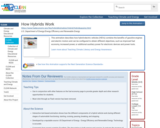
This Flash animation describes how hybrid-electric vehicles (HEVs) combine the benefits of gasoline engines and electric motors and can be configured to obtain different objectives, such as improved fuel economy, increased power, or additional auxiliary power for electronic devices and power tools.
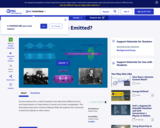
This illustrated essay from A Science Odyssey Web site explains the science behind radio waves, including the role of electrons and electromagnetic fields.